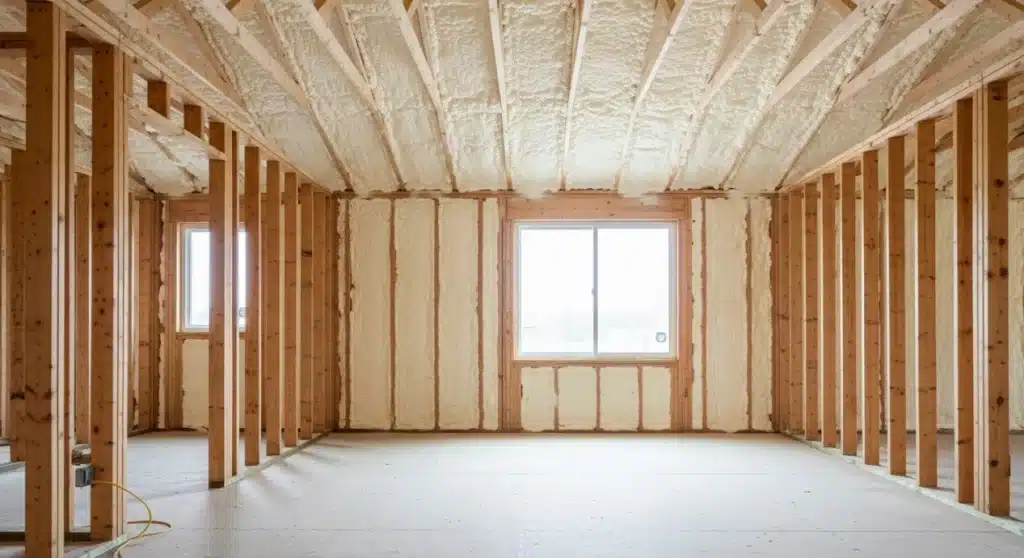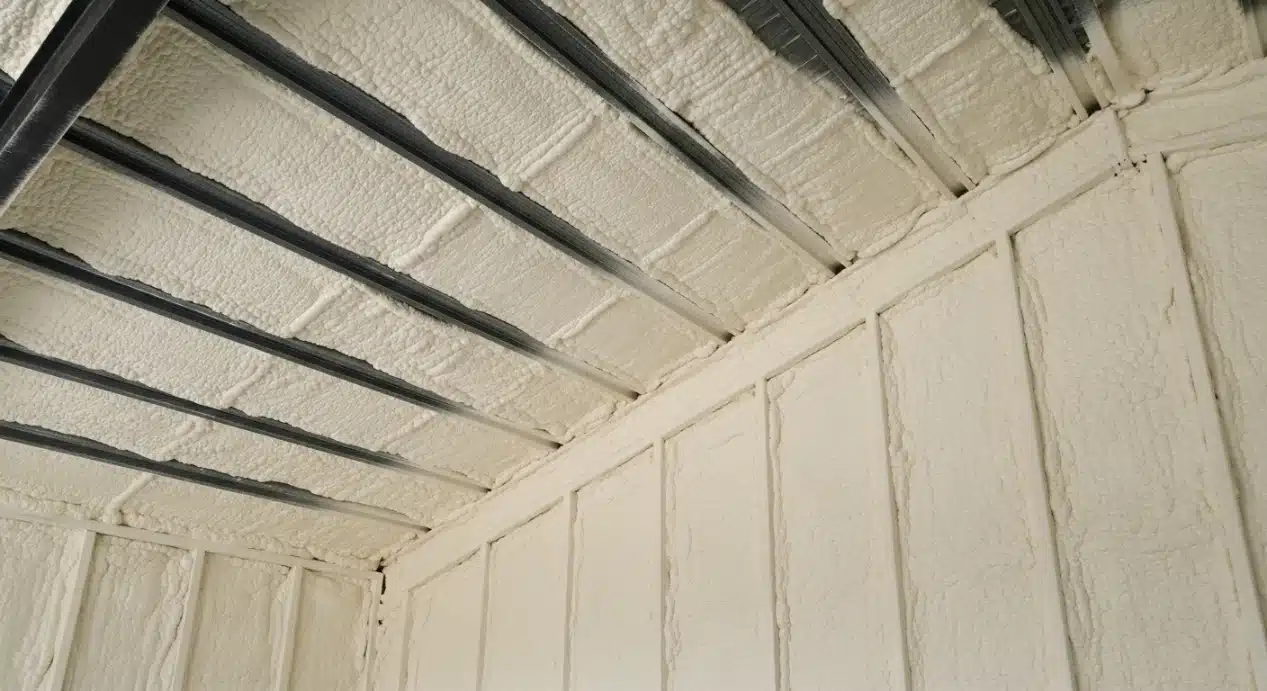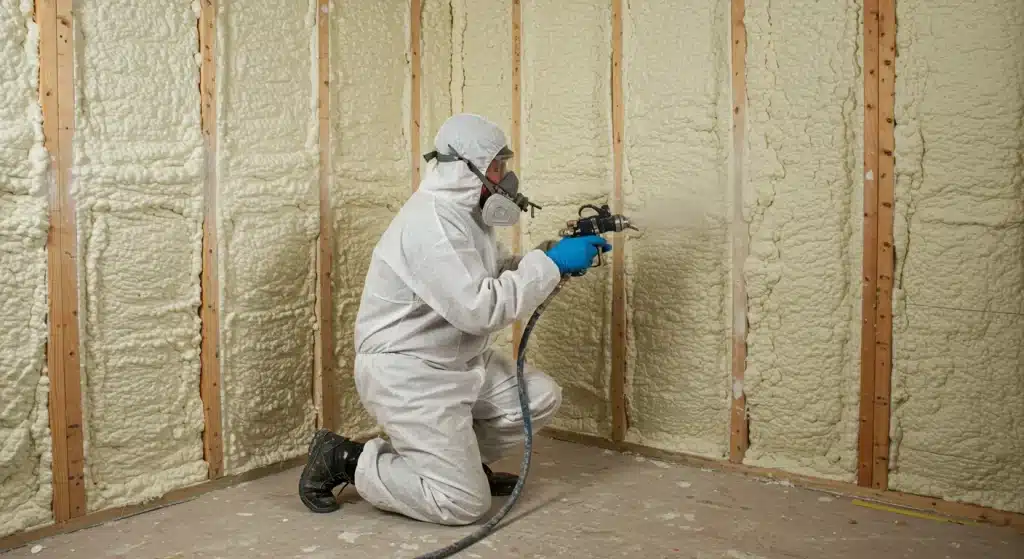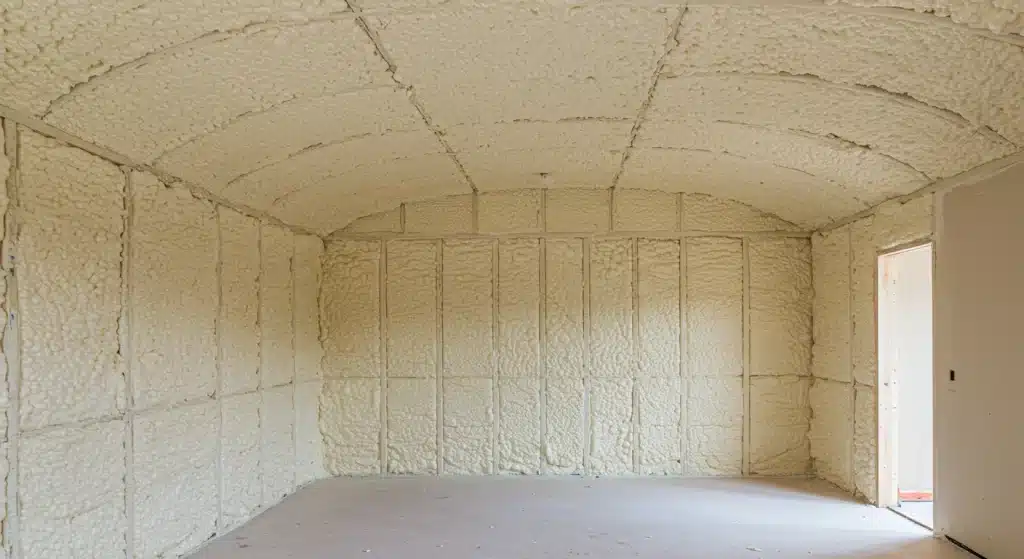Are your energy bills steadily climbing? Do some rooms in your house feel impossible to keep cool in the summer or warm in the winter? You’re not alone. Many homeowners struggle with inconsistent temperatures and high utility costs, often without realizing the root cause is hiding right inside their walls and attic: inadequate insulation. Proper home insulation is one of the most effective upgrades you can make, directly impacting your comfort, your wallet, and even your home’s structural health. It’s the invisible barrier that works around the clock to maintain a stable indoor environment.
Getting insulation right, however, involves more than just stuffing some material in the attic. It’s a science. Understanding how heat moves, what R-value really means, and which type of insulation is right for each part of your home is essential for achieving real results. This guide is built on years of hands-on experience in the field, designed to walk you through everything you need to know. We will cover the fundamentals of heat transfer, break down the pros and cons of different insulation materials, and explain the differences between a DIY project and a professional installation.
By the time you finish this guide, you’ll be able to:
- Understand the basic science behind how insulation works.
- Identify the various types of insulation and their best applications.
- Pinpoint the key areas in your home that need insulation.
- Recognize when to handle an installation yourself and when to call an expert.
- See how investing in insulation leads to significant energy savings.
Let’s get started on the path to a more comfortable and energy-efficient home.
The Science of Home Insulation: How It Really Works
Before you can choose the right material, you need to understand what you’re trying to accomplish. Insulation’s primary job is to slow down the transfer of heat. Heat naturally moves from warmer areas to cooler areas, and it does so in three different ways.
Understanding Heat Flow
- Conduction: This is heat transfer through direct contact. Think of how a metal spoon gets hot when you leave it in a cup of coffee. In your home, heat conducts through solid materials like the wood studs in your walls.
- Convection: This is heat transfer through the movement of liquids or gases. In a house, this happens when warm air rises to your attic in the winter or when cold air sinks from the attic into your living space.
- Radiation: This is heat transfer through electromagnetic waves. It’s the heat you feel from the sun or a campfire without touching it. During the summer, your roof absorbs radiant heat from the sun and transfers it into your attic.
Effective insulation is designed to counter all three forms of heat transfer, keeping your conditioned air inside and the outside temperatures out.
What is an R-Value?
You’ll see the term “R-value” on every type of insulation. Simply put, R-value measures an insulation material’s ability to resist heat flow. The higher the R-value, the better its insulating power. The amount of R-value your home needs depends on your climate zone, the part of the house you’re insulating (attic, walls, floor), and local building codes. A report from the U.S. Department of Energy provides a map and chart to help homeowners determine the recommended R-values for their specific region.
Expert Tip: R-value is measured per inch of thickness. If you compress a fiberglass batt with an R-value of 19 into a space that’s too small, you can actually reduce its effective R-value. The material needs its full loft to trap air and insulate properly.
Air Sealing: The Unsung Hero of Insulation
You could have the highest R-value insulation available, but if your home has air leaks, you’re still losing energy. Air leakage, or infiltration, happens through small gaps, cracks, and openings in your home’s “envelope,” like those around windows, doors, electrical outlets, and plumbing pipes. According to ENERGY STAR, sealing these leaks can save you a significant amount on your heating and cooling bills.
Insulation and air sealing work together. Air sealing stops the drafts (convective heat loss), while insulation stops conductive and radiant heat transfer. Forgetting to air seal before you insulate is like wearing a wool sweater full of holes on a windy day. It just won’t be as effective. For more details, see this Complete Guide to Air Sealing Your Home.
A Deep Dive into Insulation Types
There are many different types of insulation on the market, each with its own set of strengths, weaknesses, and ideal applications. Choosing the right one is key to maximizing your home’s energy efficiency.
Blanket Insulation: Rolls and Batts
This is the type of insulation most people picture. It comes in pre-cut batts or long rolls and is typically made of fiberglass, mineral wool, or cotton.
- Pros: This type is widely available, relatively inexpensive, and easy for experienced DIYers to install in standard spaces like unfinished walls or attics.
- Cons: Must be cut carefully to fit around pipes and wiring. Gaps or compression can seriously reduce its effectiveness. Some materials, like fiberglass, can be irritating to the skin and lungs during installation.
- Best For: Unobstructed spaces like unfinished attic floors, crawl spaces, and wall cavities in new construction.
Loose-Fill Insulation
Also known as blown-in insulation, this material consists of small particles of fiber, foam, or other materials. It’s blown into place using special equipment. Common materials include cellulose (made from recycled paper), fiberglass, and mineral wool.
- Pros: It is excellent for filling empty or irregular spaces and adding insulation on top of existing batts in an attic. It conforms perfectly around obstructions.
- Cons: Requires specialized equipment to install, making it a difficult DIY project. It can settle over time, reducing its R-value.
- Best For: Attics (both new and existing), enclosed existing wall cavities, and other hard-to-reach places.
Spray Foam Insulation
Spray polyurethane foam (SPF) is a chemical product that is sprayed into place and then expands to fill the space. It creates both an insulation and an air barrier. The North American Insulation Manufacturers Association notes that many under-insulated homes in the U.S. could benefit from modern solutions like spray foam.
- Open-Cell Spray Foam: This foam is lighter and more flexible, with a sponge-like texture. It’s a great air barrier but is permeable to vapor. It also has excellent sound-dampening qualities.
- Closed-Cell Spray Foam: This foam is dense and rigid. It has a higher R-value per inch and acts as a barrier to both air and moisture. Its rigidity can also add structural strength to walls.
Here’s a quick comparison:
| Feature | Open-Cell Spray Foam | Closed-Cell Spray Foam |
|---|---|---|
| R-Value per Inch | ~R-3.5 to R-3.8 | ~R-6.0 to R-7.0 |
| Air Barrier | Excellent | Excellent |
| Vapor Permeability | Permeable (allows vapor to pass) | Impermeable (blocks vapor) |
| Structural Strength | Low | High |
| Cost | Lower | Higher |
| Common Use | Interior walls, roof decks | Basements, crawl spaces, exterior walls |
- Pros: Provides a superb air seal and high R-value. It conforms perfectly to any shape, making it ideal for complex framing. Closed-cell spray foam is also waterproof.
- Cons: It is the most expensive option and requires professional installation with specialized equipment and safety gear.
- Best For: Almost anywhere, but especially rim joists, cathedral ceilings, and areas where a high R-value is needed in a thin space.
Rigid Foam Boards
These boards are made from materials like polystyrene (EPS or XPS) or polyisocyanurate (polyiso). They offer high R-value for their thickness and are very stable.
- Pros: These boards offer a high R-value, are resistant to moisture, and are easy to cut and install.
- Cons: The seams between boards must be carefully sealed with tape to prevent air leakage. Some types are manufactured with blowing agents that have a high global warming potential.
- Best For: Insulating foundation walls, basement walls, and unvented low-slope roofs.
Key Takeaways: Choosing Your Insulation
- For Standard, Open Spaces: Blanket batts or rolls are a cost-effective choice.
- For Irregular or Existing Spaces: Loose-fill insulation provides excellent coverage in attics and enclosed walls.
- For Maximum Performance & Air Sealing: Spray foam insulation offers the highest R-value and an integrated air barrier, making it a premium solution.
- For Foundations & Exteriors: Rigid foam boards provide a strong, moisture-resistant thermal break.

Where to Insulate: A Room-by-Room Guide
To get the most benefit, you need to insulate all parts of your home’s “thermal envelope.” This is the boundary between the heated/cooled living space and the unconditioned outdoors.
The Attic: Your Home’s First Line of Defense
Because heat rises, the attic is often the single biggest source of heat loss in the winter and heat gain in the summer. Properly insulating your attic floor to the recommended R-value for your area is one of the quickest ways to see a return on your investment. You can find the best insulation for your climate zone using ENERGY STAR’s resources.
Walls: New Construction vs. Existing Homes
In new construction, it’s easy to insulate walls with batts, spray foam, or rigid boards before the drywall goes up. For existing homes, insulating walls is more complicated. The best option is often to have loose-fill insulation professionally blown into the wall cavities through small holes drilled from the inside or outside.
Floors, Basements, and Crawl Spaces
Floors above unheated garages or vented crawl spaces need insulation to prevent cold air from seeping into the living area above. Basement and crawl space walls should also be insulated to reduce heat loss through the foundation. Closed-cell spray foam or rigid foam boards are excellent choices here because they are resistant to moisture, which is often a concern in below-ground areas.
Expert Tip: In crawl spaces, it’s often better to insulate the crawl space walls (creating a “conditioned” crawl space) rather than the floor above. This helps protect pipes from freezing and can improve overall air quality in the home.
The Installation Process: DIY vs. Professional
Once you know what you need and where, the next step is getting it installed. Some jobs are suitable for a handy homeowner, while others demand professional expertise.
Assessing Your Current Insulation
Before you add more, you need to know what you have. Go into your attic with a ruler and measure the depth of your existing insulation. Check for any areas that are thin, compressed, or missing. Look for signs of moisture or pest damage, as these issues must be addressed before adding new material.
DIY Installation: What You Can Realistically Tackle
Projects like laying down fiberglass or mineral wool batts in an open attic floor or insulating a crawl space are often manageable for a DIYer.
However, safety is paramount. Always wear protective gear, including gloves, long sleeves, eye protection, and a dust mask or respirator. Be careful where you step in an attic, staying on the joists to avoid falling through the ceiling.
When to Call a Professional
Some jobs should always be left to the pros. These include:
- Spray Foam Insulation: This requires specific training, mixing equipment, and extensive personal protective equipment (PPE) to handle the chemicals safely.
- Blown-In/Loose-Fill Insulation: This requires a large blowing machine that is typically rented or owned by insulation contractors.
- Insulating Existing Walls: Professionals have the tools and experience to drill into wall cavities and fill them properly without causing damage.
A professional contractor from a company like Supreme Spray Foam LV can ensure the job is done correctly, safely, and up to code, maximizing your energy savings and giving you peace of mind.
Calculating Your Energy Savings and ROI
Investing in insulation isn’t just about comfort; it’s a financial decision that pays for itself over time. The insulation industry is growing as more people recognize these benefits.
How Insulation Lowers Your Utility Bills
By slowing heat transfer, insulation reduces the workload on your furnace and air conditioner. Your HVAC system won’t have to run as long or as often to maintain your desired temperature. The U.S. Environmental Protection Agency estimates that homeowners can save an average of 15% on heating and cooling costs by air sealing their homes and adding insulation in attics, floors, and crawl spaces.
The Impact on HVAC System Longevity
Because your HVAC system runs less, you’re not just saving on energy. You’re also reducing wear and tear on the equipment. This can lead to fewer repairs and a longer lifespan for one of the most expensive systems in your home.
Understanding Government Rebates and Tax Credits
To encourage energy efficiency, federal, state, and local governments, along with utility companies, often offer rebates or tax credits for insulation projects. The Database of State Incentives for Renewables & Efficiency (DSIRE) is a great resource for finding programs in your area. These incentives can significantly reduce the upfront cost of your project and shorten your payback period.
Putting Your Home Insulation Strategy into Action
You now have a solid understanding of how home insulation works, the different materials available, and how a properly insulated home can lead to serious energy savings and improved comfort. From understanding R-values to knowing the difference between open-cell spray foam and closed-cell spray foam, you’re equipped to make informed decisions for your home.
Whether you’re planning a weekend DIY project to beef up your attic insulation or considering a full professional upgrade, the goal is the same: create a continuous thermal barrier that keeps your home comfortable year-round. Use this guide as your reference, assess your home’s specific needs, and take the first step toward a more efficient and enjoyable living space.
Need Expert Guidance?
While this guide equips you for many insulation tasks, a project can still feel like a big undertaking, especially when it comes to advanced solutions like spray foam. If you want to ensure the job is done right for maximum performance and longevity, professional help is the best path forward. For a detailed assessment and expert installation, you can contact the team at Supreme Spray Foam LV. Reach out to us for a consultation by calling (702) 904-9585 or sending an email to [email protected].
Sources
- U.S. Department of Energy – Provides official recommendations for insulation R-values based on climate zone.
- ENERGY STAR – Offers data and guidance on the energy savings potential of air sealing and insulation.
Frequently Asked Questions About Home Insulation
How much insulation do I need?
This depends entirely on your climate zone and the part of the home being insulated. The Department of Energy provides R-value recommendations for different regions. A professional can perform an energy audit to give you a precise recommendation.
Can you have too much insulation?
Practically speaking, it’s difficult to over-insulate an attic from a performance standpoint. However, you can reach a point of diminishing returns where the cost of adding more insulation outweighs the small additional energy savings. It’s more important to have the right amount of evenly distributed insulation combined with proper air sealing.
Does old insulation need to be removed?
Not always. If the old insulation is in good condition (dry and not compacted or contaminated), you can usually add new insulation right on top of it. However, if it’s wet, moldy, or infested with pests, it must be removed completely before new material is installed.
What’s the best type of insulation for soundproofing?
While all insulation provides some sound dampening, materials with higher density and mass are generally better. Mineral wool and open-cell spray foam are both excellent choices for reducing noise transmission between rooms.
How long does insulation last?
The lifespan depends on the material and conditions. Fiberglass, mineral wool, and cellulose can last for many decades if they remain dry and undisturbed. Spray foam insulation is very durable and generally lasts for the life of the home.
Is spray foam insulation safe?
When installed correctly by a trained professional, spray foam insulation is safe. Professionals use specific safety protocols and equipment during application. Once the foam has fully cured (typically within 24 hours), it becomes an inert, stable, and safe material.






